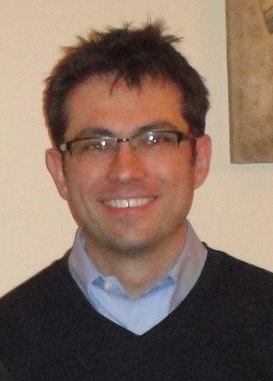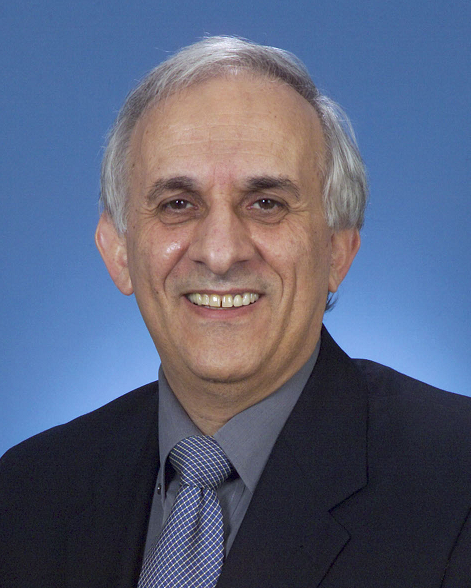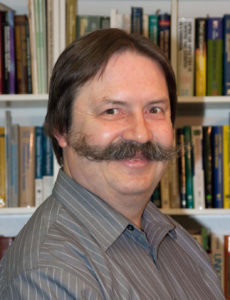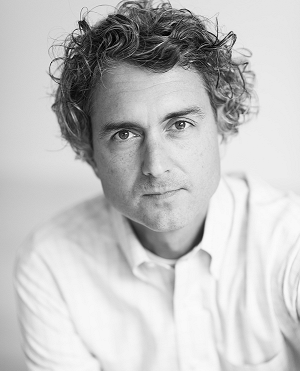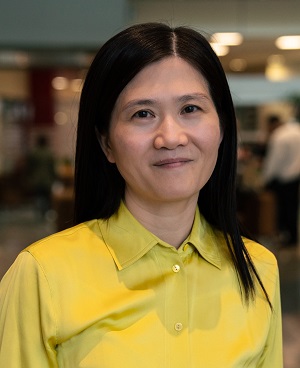Mike Alaimo
Bio: Mike Alaimo is an applications engineer specializing in supporting RF channel emulation and Keysight’s Propsim portfolio. He joined Keysight in 2016 after the acquisition of Anite, and previously was with Freescale Semiconductor. He is based in the Chicago area and covers wireless/cellular and aerospace/defense markets in North America. He has over 20 year of experience in wireless chip and radio development and test, RF test, and DSP algorithm development. Mike has a BSEE from the University of Illinois at Chicago and an MSEE from the Illinois Institute of Technology.
Talk Title: RF channel emulation and practical considerations for testing at mmWaves in the lab with real devices.
Abstract: In any wireless system, the propagation environment that links transmitters and receivers is an integral, yet sometimes overlooked, part of the end-to-end operation. This propagation environment is becoming an increasingly essential consideration for system design and test as radio technology continues to evolve, particularly for 5G deployment and optimization.
As cellular technology advances to millimeter-wave (mmW) operation, the physics of higher-frequency operation mean that conventional approaches are no longer able to support meaningful test objectives.
This session will introduce the key challenges around testing mmW devices and systems, and next-generation test methods. We’ll start with an overview of the fundamentals of RF propagation channel theory, with emphasis on newer concepts in the domain. Then we will examine an updated approach for practical testing for 5G systems. This session will be suitable for both beginners and experts.
Dr. Chulong Chen
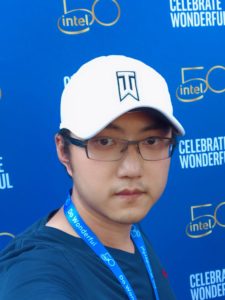 Bio: Dr. Chulong Chen is a Senior Research Scientist at Intel Labs. He is one of the group’s pioneering researcher in the field of wireless sensing and communication systems. Currently, he is performing a leading role on exploring new opportunities for Intel on commercial radar systems in mmwave and sub-Thz spectrum with potential application in automotive and beyond. He also led the development of multiple enabling modules for Intel’s first 5G-NR mobile test platform. As an inventor Dr. Chulong Chen holds multiple patents and/or pending patents in the cellular systems in 3GPP family and radar systems. He obtained MS and Ph.D. degree in Electrical and Computer Engineering from Purdue University with research focus on statistical signal processing, compressive sensing and machine learning techniques. He received Bachelor of Engineering degrees from Department of Telecommunication Engineering and Science and Bachelor of Law Degree from the Law School both at Fudan University, Shanghai China, in 2008.
Bio: Dr. Chulong Chen is a Senior Research Scientist at Intel Labs. He is one of the group’s pioneering researcher in the field of wireless sensing and communication systems. Currently, he is performing a leading role on exploring new opportunities for Intel on commercial radar systems in mmwave and sub-Thz spectrum with potential application in automotive and beyond. He also led the development of multiple enabling modules for Intel’s first 5G-NR mobile test platform. As an inventor Dr. Chulong Chen holds multiple patents and/or pending patents in the cellular systems in 3GPP family and radar systems. He obtained MS and Ph.D. degree in Electrical and Computer Engineering from Purdue University with research focus on statistical signal processing, compressive sensing and machine learning techniques. He received Bachelor of Engineering degrees from Department of Telecommunication Engineering and Science and Bachelor of Law Degree from the Law School both at Fudan University, Shanghai China, in 2008.
Talk Title: Electromagnetic Sight, a Science Fiction No Longer: Momentum of AI Advancement Intersecting Radar Sensors
Abstract: Advancement in AI makes wireless sensing more accessible to a broad spectrum of applications. In this talk, an overview of potential use cases of wireless sensing is first presented, followed by a discussion on the limits and challenges of scaling of wireless solutions to a wide range of applications from the perspective of system and algorithms. Then a simulation boosted deep-learning approach to solve the challenges is proposed along with a case study in AI-enabled wireless human sensing application. The talk concludes with a discussion on the future direction and challenges in the area.
Dr. Bill Deal
 Bio: Dr. Bill Deal is a consulting engineer in Northrop Grumman’s RF and Mixed Signal Department, where he leads the development of high frequency integrated circuit and subsystem development. He has authored and co-authored more than 150 journal and conference papers, as well as five book chapters. Dr. Deal received the Outstanding Young Engineer Award in 2009, the 2012 IEEE MWCL “Tatsuo Itoh” Best Paper Award, and the 2016 IEEE EDL “George E. Smith” Best Paper Award. His team has also been awarded the Guinness World Record for world’s fastest integrated circuit in 2014 for first low noise amplifiers at 1,000 GHz.
Bio: Dr. Bill Deal is a consulting engineer in Northrop Grumman’s RF and Mixed Signal Department, where he leads the development of high frequency integrated circuit and subsystem development. He has authored and co-authored more than 150 journal and conference papers, as well as five book chapters. Dr. Deal received the Outstanding Young Engineer Award in 2009, the 2012 IEEE MWCL “Tatsuo Itoh” Best Paper Award, and the 2016 IEEE EDL “George E. Smith” Best Paper Award. His team has also been awarded the Guinness World Record for world’s fastest integrated circuit in 2014 for first low noise amplifiers at 1,000 GHz.
Talk Title: Harnessing the Upper Portion of the mmWave band for the Internet of ThingsAbstract: Solid state technologies have advanced to the point where wireless systems are now possible throughout the mmWave spectrum (30-300 GHz). This talk begins with an overview of semiconductor technologies capable of operating in this frequency range, and continues with a discussion of practical limitations in upper portion of this frequency range. The talk concludes with a discussion on recent link measurements.
Dr. Adam Drobot
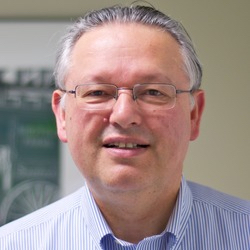 Bio: Dr. Adam Drobot is an experienced technologist. His activities are strategic consulting, start-ups, and industry associations. He is the Chairman of the Board of OpenTechWorks, Inc. In the past he was the Managing Director and CTO of 2M Companies, the President of the Applied Research at Telcordia Technologies (Bellcore) and the company’s CTO. Previous to that, he managed the Advanced Technology Group at Science Applications International (SAIC/Leidos) and was the Senior Vice President for Science and Technology at SAIC during part of his service.
Bio: Dr. Adam Drobot is an experienced technologist. His activities are strategic consulting, start-ups, and industry associations. He is the Chairman of the Board of OpenTechWorks, Inc. In the past he was the Managing Director and CTO of 2M Companies, the President of the Applied Research at Telcordia Technologies (Bellcore) and the company’s CTO. Previous to that, he managed the Advanced Technology Group at Science Applications International (SAIC/Leidos) and was the Senior Vice President for Science and Technology at SAIC during part of his service.
Adam is a member of the FCC Technological Advisory Council. In the past he was on the Board of the Telecommunications Industry Association where he Chaired the Technology Committee, the US DoT ITS Program Advisory Committee; and the University of Michigan Transportation Research Institute External Advisory Board. In 2017 and 2018 he chaired the IEEE IoT Activities Board. He has published over 100 journal articles and holds 27 patents. His degrees include a BA in Engineering Physics from Cornell University and a PhD. in Plasma Physics from the University of Texas.
Talk Title: The Internet of Things (IoT) and the mmWave Frontier: an Overview
Abstract: The growth of the Internet of Things (IoT) places new demands on the performance, attributes, operating characteristics, and economics of underlying technologies. It provides a unique opportunity (as well as challenges) for mmWave and THz devices to play a critical role. The areas where this is important include: (1) Communications; (2) Sensing; and (3) Industrial Processes. IoT is inherently complex, and architectures, applications, and solutions that are emerging place a premium on size, weight, power, and cost. They also place a premium on the ecosystems that are compatible with operations at scale, as well as policy and regulatory constraints. The talk will cover a view of what IoT is about, where devices that operate at mmWave lengths and adjacent spectrum may be expected to contribute in a unique way, and the key issues for success and adoption.
Dr. George Elmasry
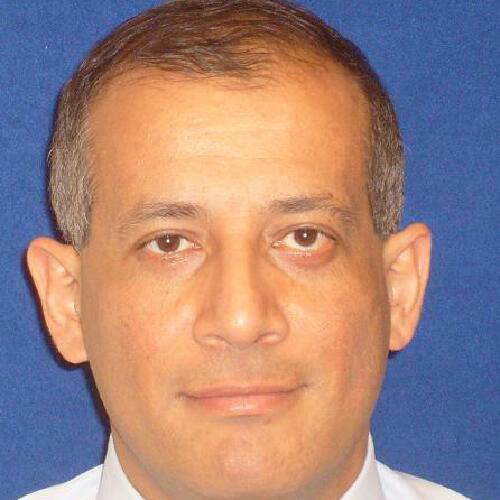 Bio: George Elmasry has a Ph. D. in Electrical and Computer Engineering from The New Jersey Institute of Technology with extensive industry and academic experience. George is the winner of the Hashimoto Prize for achievement and academic excellence and is the sole author of two books entitled “Tactical Wireless Communications and Networks, Design Concepts and Challenges,” and “Dynamic Spectrum Access: Local, Distributed, Centralized or Hybrid Design”
Bio: George Elmasry has a Ph. D. in Electrical and Computer Engineering from The New Jersey Institute of Technology with extensive industry and academic experience. George is the winner of the Hashimoto Prize for achievement and academic excellence and is the sole author of two books entitled “Tactical Wireless Communications and Networks, Design Concepts and Challenges,” and “Dynamic Spectrum Access: Local, Distributed, Centralized or Hybrid Design”
Talk Title: The impact of mm-Wave on Civil aviation IoT path
Abstract: The presentation discusses the impact of the IoT and the mm-wave links on the civil aviation communications industry showing how incremental steps can be considered as 5G evolves. The presentation shows the competing forces that can influence the evolution path of the civil aviation communications where air-to-ground links can be (1) broadband satellites links for backhauling; (2) mm-wave backhauling links pointing to the ground; or (3) futuristic 5G non terrestrial links where the aircraft mm-wave antenna will track and point to the 5G space platform (satellite or High Altitude UAS Platform — HAP). The presentation also shows how 5G and IoT may need to be tied to developing an aircraft Software Defined Router (SDR) that facilitates the adaptation of 5G technologies and brings full IoT capabilities to the aircraft in this highly regulated industry.
Dr. John Graybeal
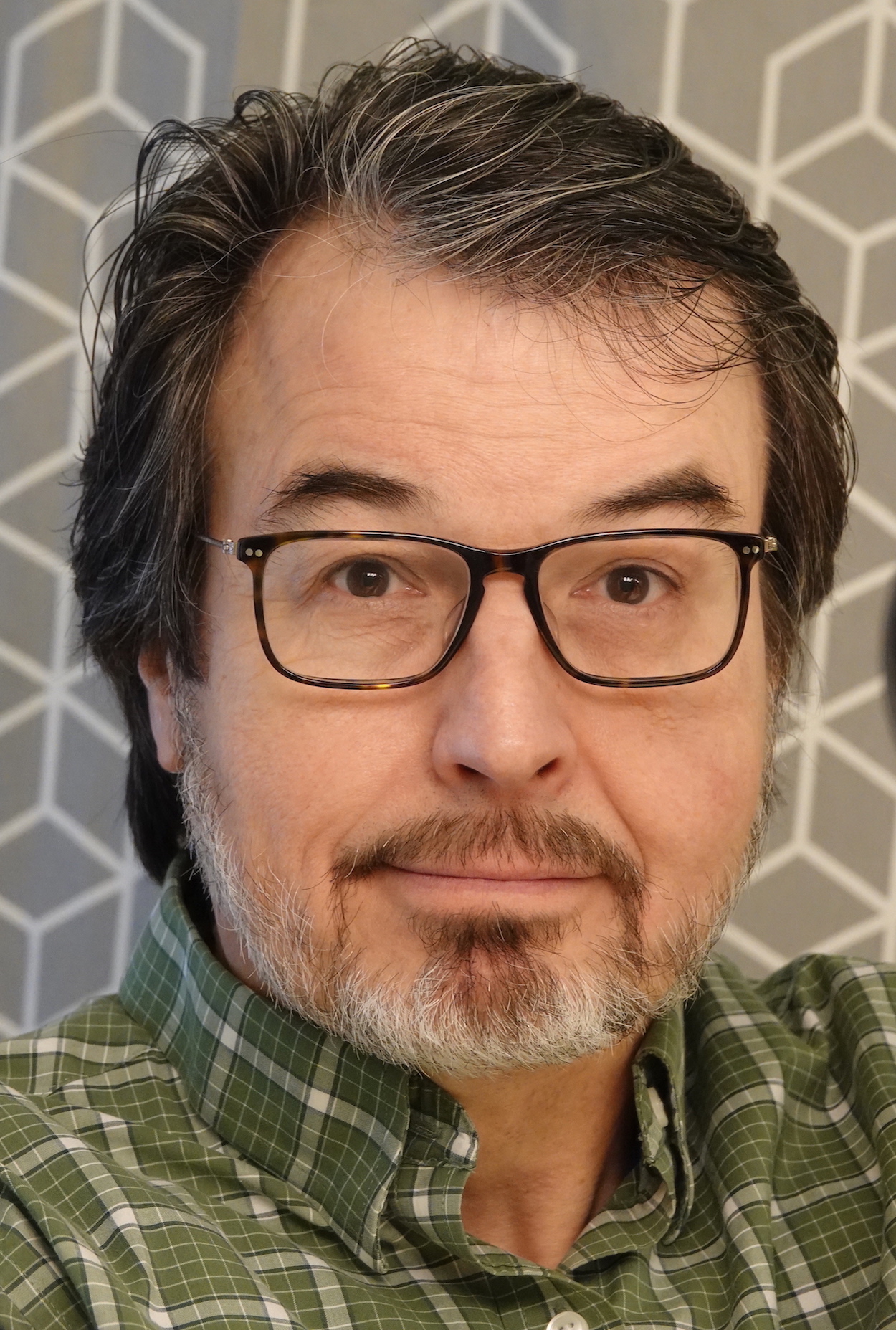 Bio: John is a Principal Engineer in Cisco’s Chief Technology & Architecture Office., contributing to 5G strategy for service providers and enterprises. He earned his B.S. Physics from the University of Texas at Austin, a Ph.D. Physics from Stanford University, and a Postdoctoral Fellowship at AT&T Bell Laboratories in Murray Hill, NJ. Originally a condensed matter experimental physicist, he previously served on the physics faculties at the University of Florida and the Massachusetts Institute of Technology. He is a past recipient of a Sloan Research Fellowship and a Young Investigator award from the Office of Naval Research. Shifting to wireless communications, he returned to Bell Labs as a wireless researcher and then moved into the Chief Technology Office at Alcatel-Lucent, Juniper Networks, and now Cisco Systems (where he has worked for the past 8 years).
Bio: John is a Principal Engineer in Cisco’s Chief Technology & Architecture Office., contributing to 5G strategy for service providers and enterprises. He earned his B.S. Physics from the University of Texas at Austin, a Ph.D. Physics from Stanford University, and a Postdoctoral Fellowship at AT&T Bell Laboratories in Murray Hill, NJ. Originally a condensed matter experimental physicist, he previously served on the physics faculties at the University of Florida and the Massachusetts Institute of Technology. He is a past recipient of a Sloan Research Fellowship and a Young Investigator award from the Office of Naval Research. Shifting to wireless communications, he returned to Bell Labs as a wireless researcher and then moved into the Chief Technology Office at Alcatel-Lucent, Juniper Networks, and now Cisco Systems (where he has worked for the past 8 years).
Talk Title: Requirements for Industrial IoT Spectrum
Abstract: Wireless IIoT is approaching an inflection point, where it becomes recognized as an enabler for critical business & industrial processes which are essential to innovation, competitiveness, economic productivity & growth. However, in order to fully flourish, IIoT requires spectrum with an appropriate regulatory framework. Hence we discuss the business, technical, spectrum, and regulatory considerations and requirements which we believe are important. We also comment upon some selected international spectrum bands and regulations.
Dr. Keith D. Gremban
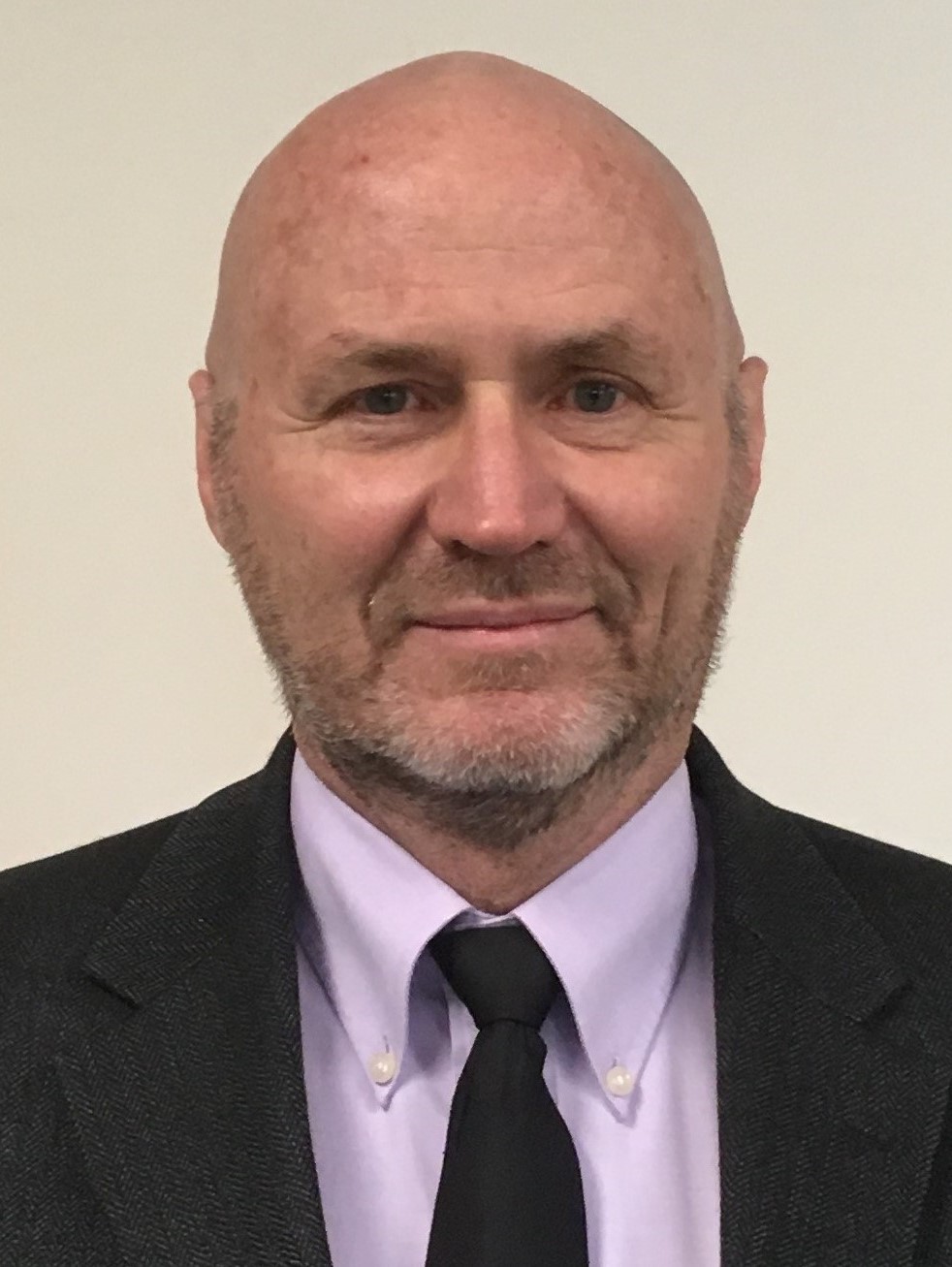 Bio: Keith Gremban is a Research Professor in the Technology, Cybersecurity, and Policy (TCP) Program at the University of Colorado Boulder. Keith has been involved in systems engineering and advanced technology development for over thirty years. Prior to joining the University of Colorado, Keith was the Director of the Institute for Telecommunication Sciences (ITS), which is the research and engineering laboratory for the National Telecommunications and Information Administration (NTIA). Keith was also a Program Manager at the Defense Advanced Research Projects Agency (DARPA) where he managed a portfolio of programs in the areas of wireless communications and electronic warfare. Prior to DARPA, Keith worked at a variety of companies and research organizations, managing and leading research and systems engineering projects, including a diverse collection of unmanned systems and command-and-control applications. Keith received his Ph.D. and M.S. in Computer Science from Carnegie Mellon University, and his M.S. in Applied Mathematics and B.S. in Mathematics from Michigan State University.
Bio: Keith Gremban is a Research Professor in the Technology, Cybersecurity, and Policy (TCP) Program at the University of Colorado Boulder. Keith has been involved in systems engineering and advanced technology development for over thirty years. Prior to joining the University of Colorado, Keith was the Director of the Institute for Telecommunication Sciences (ITS), which is the research and engineering laboratory for the National Telecommunications and Information Administration (NTIA). Keith was also a Program Manager at the Defense Advanced Research Projects Agency (DARPA) where he managed a portfolio of programs in the areas of wireless communications and electronic warfare. Prior to DARPA, Keith worked at a variety of companies and research organizations, managing and leading research and systems engineering projects, including a diverse collection of unmanned systems and command-and-control applications. Keith received his Ph.D. and M.S. in Computer Science from Carnegie Mellon University, and his M.S. in Applied Mathematics and B.S. in Mathematics from Michigan State University.
Talk Title: Mm-wave Communications: Opportunities and Challenges for IoT
Abstract: Mm-waves occupy the radio frequency (RF) spectrum from 30 GHz to 300 GHz. Opening up mm-wave frequencies for communications will provide many opportunities for IoT developers to exploit. Exploitation of mm-waves is essential to meeting many of the promises of 5G communications, such high capacity, low latency, and high connection densities. However, along with these opportunities, many challenges exist for deployment of mm-wave communications. Mm-waves have propagation properties that are significantly different from the sub-6 GHz frequencies that are used in 4G/LTE. This talk will discuss some of the biggest opportunities for IoT in mm-wave communications, and present some of the issues that must be considered in deploying mm-wave solutions.
Michael Ha
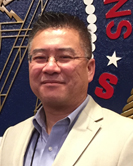 Bio: Michael Ha is the Chief of Policy and Rules Division, Office of Engineering and Technology at the Federal Communications Commission. Since joining the Commission in 2010, he has been engaged in various proceedings on spectrum allocations for wireless broadband services, mobile/fixed satellite services, public safety services and unlicensed services. Michael’s recent focus has been on Spectrum Frontiers where mmW band spectrum above 24GHz is being made available for 5G services. He is also focusing on the terahertz spectrum in the Spectrum Horizons’ proceeding, as well as the mid-band spectrum in 3-7GHz band. Michael serves as the FCC’s liaison to the Interdepartment Radio Advisory Committee (IRAC) where federal/non-federal spectrum sharing discussion takes place with federal agencies.
Bio: Michael Ha is the Chief of Policy and Rules Division, Office of Engineering and Technology at the Federal Communications Commission. Since joining the Commission in 2010, he has been engaged in various proceedings on spectrum allocations for wireless broadband services, mobile/fixed satellite services, public safety services and unlicensed services. Michael’s recent focus has been on Spectrum Frontiers where mmW band spectrum above 24GHz is being made available for 5G services. He is also focusing on the terahertz spectrum in the Spectrum Horizons’ proceeding, as well as the mid-band spectrum in 3-7GHz band. Michael serves as the FCC’s liaison to the Interdepartment Radio Advisory Committee (IRAC) where federal/non-federal spectrum sharing discussion takes place with federal agencies.
Michael held various technology and management leadership positions in R&D, Technology Development, Corporate Strategy and Product Management through his private wireless industry career. Prior to joining the Commission, he served as the Director of Device Management at Sprint-Nextel, where his team was responsible for the WiMAX device development and portfolio strategy.
Michael received a Sc.B degree in Electrical Engineering from University of California, San Diego and Masters of Engineering degree in Electrical Engineering from Cornell University.
Talk Title: FCC Spectrum Activities: Spectrum Frontiers (above 24GHz), Horizons (above 95GHz) and Beyond
Abstract: The Commission has released over 12GHz of spectrum for licensed and unlicensed mobile use from the Spectrum Frontiers proceeding. The Spectrum Horizons First Report and Order enabled a new category of experimental licenses for use of frequencies between 95GHz and 3THz and also made 21.2 gigahertz of spectrum available for use by unlicensed devices. The Commission continues to research innovative use of spectrum in mmW band above 95GHz.
Dr. Allen Katz
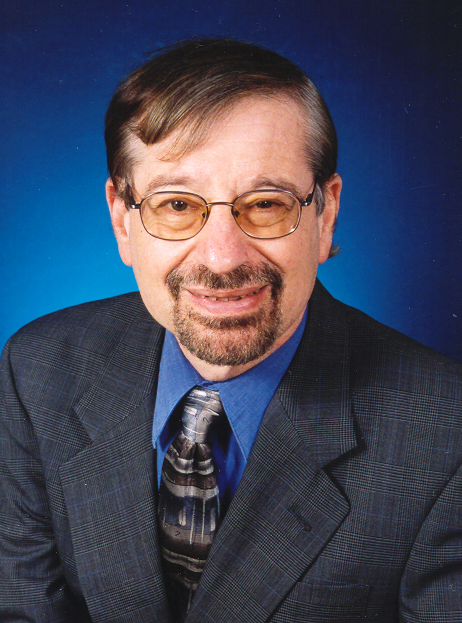 Bio: Dr. Allen Katz is a professor of Electrical/Computer Engineering at The College of New Jersey. He is founder and President of Linearizer Technology, Inc, which includes Linear Photonics, LLC and Linear Space Technology, LLC. He received his doctorate and baccalaureate degrees in electrical engineering from New Jersey Institute of Technology and a master’s in electrical engineering from Rutgers University. He holds 17 patents and has written more than 150 technical publications. He received the IEEE’s Microwave Society’s (MTT) Application Award in 2015 for his work in linearization of power amplifiers, the IEEE Microwave Magazine Best Paper Award in 2010 and the William Randolph Lovelace II Award for outstanding contributions to space science and technology from the American Astronautical Society in 2002. Dr. Katz is a Fellow of the IEEE and a past MTT Distinguished Microwave Lecturer.
Bio: Dr. Allen Katz is a professor of Electrical/Computer Engineering at The College of New Jersey. He is founder and President of Linearizer Technology, Inc, which includes Linear Photonics, LLC and Linear Space Technology, LLC. He received his doctorate and baccalaureate degrees in electrical engineering from New Jersey Institute of Technology and a master’s in electrical engineering from Rutgers University. He holds 17 patents and has written more than 150 technical publications. He received the IEEE’s Microwave Society’s (MTT) Application Award in 2015 for his work in linearization of power amplifiers, the IEEE Microwave Magazine Best Paper Award in 2010 and the William Randolph Lovelace II Award for outstanding contributions to space science and technology from the American Astronautical Society in 2002. Dr. Katz is a Fellow of the IEEE and a past MTT Distinguished Microwave Lecturer.
Talk Title: The Importance of Linearizers Onboard Satellites
Abstract: Power efficiency, mass and size are of critical importance for satellites. Linearizers offer the most compact and efficient RF/microwave/millimeter-wave linear power amplification. Linearity is important not only for communications satellites were the ability to transmit information at high data rates is directly related to the linearity of a satellite’s amplifiers, but also for navigational satellites where phase linearity is of high importance and for scientific/instrumentation payloads where data communications can be of great concern. The advantages offered by linearizing in space will be discussed.
Timothy T. Lee
 Bio: Timothy Lee is currently a Boeing Technical Fellow at The Boeing Company and leads the development of disruptive microelectronics technologies for advanced communications networks and sensor systems for airborne and space applications. In IEEE, he served as the 2015 IEEE Microwave Theory and Techniques Society (MTT-S) and is currently the IEEE Region 6 (Western US) Director-Elect and a Co-Chair of the IEEE Future Networks Initiative and a Co-Chair of the IEEE Heterogeneous Integration Roadmap TWG’s for 5G and Aerospace & Defense. He is also the General Chair of the IEEE IMS2020 (“Microwave Week”) which will be held in downtown Los Angeles, CA in 21-26 June 2020.
Bio: Timothy Lee is currently a Boeing Technical Fellow at The Boeing Company and leads the development of disruptive microelectronics technologies for advanced communications networks and sensor systems for airborne and space applications. In IEEE, he served as the 2015 IEEE Microwave Theory and Techniques Society (MTT-S) and is currently the IEEE Region 6 (Western US) Director-Elect and a Co-Chair of the IEEE Future Networks Initiative and a Co-Chair of the IEEE Heterogeneous Integration Roadmap TWG’s for 5G and Aerospace & Defense. He is also the General Chair of the IEEE IMS2020 (“Microwave Week”) which will be held in downtown Los Angeles, CA in 21-26 June 2020.
His current research interests include silicon Application Specific Integrated Circuits (ASICs) and gallium nitride Monolithic Microwave Integrated Circuits (MMICs), and 2.5D/3D heterogeneous integration/packaging of microsystems. He led the development of hardware for satellite communications and phased-array antenna systems. He has over 36 years of experience and has held technical/managerial positions at research laboratories, aerospace companies, and semiconductor foundries. His innovations include the development of millimeter-wave MMIC transmitters and receivers for system applications.
Talk Title: The Role of Roadmaps for IEEE Future Networks – 5G and Beyond Initiative
Abstract: 5G is not only evolutionary, providing higher bandwidth and lower latency than current-generation technology; more importantly, 5G is revolutionary, in that it is expected to enable fundamentally new applications with much more stringent requirements in latency and bandwidth. The IEEE Future Networks Initiative serves the purpose of engaging and mobilizing professionals worldwide across industry, government, academia, and the standards, policy, and regulatory communities to realize the historic transformation enabled by 5G and future generations of connectivity and networking. This presentation will provide the status of the IEEE Network Generations (INGR) Roadmap which is being released in its first edition this year. The INGR covers all aspects of the 5G ecosystem including current and future generations over the next 10 years, including drivers for IoT, AI/ML, and dynamic spectrum sharing. It identifies technology gaps and showstoppers with inputs from industry, academia and government. It’s goal is inform and provide pre-competitive guidance so that all stakeholders can benefit. I will describe highlights of technical areas including Applications and Services, Deployment, Edge Automation Platforms, Hardware, Massive MIMO, Millimeter-wave for Signal Processing, Optics, Satellite, Security, Standardization Building Blocks, Systems Optimization and Testbeds. A more detailed discussion on the millimeter-wave challenge will be provided.
Dr. Baruch Levush
Bio: Dr. Baruch Levush received his M.Sc (Physics) from Latvian University in Riga in 1972. His Ph.D. (Physics) he received from Tel-Aviv University in 1981 followed by a Post-Doctoral Fellowship at the Laboratory for Plasma and Fusion Energy Studies at the University of Maryland (UMD). In 1985 Dr. Levush joined the Institute for Plasma Research at the UMD, where his research focused on the physics of coherent radiation sources and the design of high-power microwave and millimeter wave sources such as gyrotrons, relativistic backward-wave oscillators and free electron lasers. He joined the Electronics Science and Technology Division (ESTD) at the Naval Research Laboratory (NRL) as the Head of the Theory and Design Section of the Vacuum Electronics Branch in 1995 and in 2003 he became the Head of the Vacuum Electronics Branch. In 2012 Dr. Levush entered the Senior Executive Service (SES) as the Superintendent of the ESTD. ESTD’s mission is to perform a multi-disciplinary, broadly based fundamental research program that includes but not limited to research activities on electronic materials, devices and components that ensure Navy’s ownership of the electromagnetic spectrum for communications, sensors, electronic warfare and directed energy. In 2001 Dr. Levush was elected a Fellow of the Institute of Electrical and Electronics Engineers (IEEE). He holds numerous awards including an R&D100 Award (2006), the Department of the Navy Captain Robert Dexter Conrad Award (2009) and the IEEE Electron Devices Society’s J.J. Ebers Award (2009). Dr. Levush is the co-author of more than 190 journal articles and has presented many invited talks at international conferences and workshops. Collectively these works have been cited over 5750 times leading to an h-index of 39.
Dr. Jeffrey M. Pond
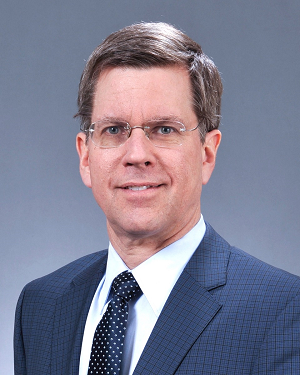 Bio: Dr. Jeffrey M. Pond (Ph.D. 1982, U. of Michigan, Elec. Eng.) has served since 2013 as Associate Superintendent of the Naval Research Laboratory’s Electronics Science and Technology Division (ESTD). Previously (2008-2013), he served as Head of NRL ESTD’s Microwave Technology Branch. From 2002 to 2008 he served as Section Head of the Solid-State Circuits Section of the Microwave Technology Branch with personal active research interests in novel filters and G-band propagation. Between 1982 and 2002 he was a research engineer investigating novel devices using GaAs/AlGaAs superlattices, low- and high-temperature superconductors, and ferroelectrics. He has authored or co-authored over 150 archival publications. He has served on Program Committees for innumerable international conferences focused on rf, microwave, and millimeter-wave technologies and was General Chair of the 2011 International Microwave Symposium in Baltimore.
Bio: Dr. Jeffrey M. Pond (Ph.D. 1982, U. of Michigan, Elec. Eng.) has served since 2013 as Associate Superintendent of the Naval Research Laboratory’s Electronics Science and Technology Division (ESTD). Previously (2008-2013), he served as Head of NRL ESTD’s Microwave Technology Branch. From 2002 to 2008 he served as Section Head of the Solid-State Circuits Section of the Microwave Technology Branch with personal active research interests in novel filters and G-band propagation. Between 1982 and 2002 he was a research engineer investigating novel devices using GaAs/AlGaAs superlattices, low- and high-temperature superconductors, and ferroelectrics. He has authored or co-authored over 150 archival publications. He has served on Program Committees for innumerable international conferences focused on rf, microwave, and millimeter-wave technologies and was General Chair of the 2011 International Microwave Symposium in Baltimore.
Talk Title: Millimeter-wave Research at NRL in the IoT Age
Authors: Baruch Levush and Jeffrey Pond
Abstract: Seventy years ago, J. R. Pierce noted: “The millimeter wave range, a relatively undeveloped field for research, presents a challenge to theoreticians, experimentalists, and inventors alike . . .”[1]
It may have taken awhile, but theoreticians, experimentalists, and inventors took up the challenge, and are developing the millimeter wave range for a myriad of commercial and military applications. The vision for a future where everything is interconnected is placing a tremendous burden on the available channel capacity to transmit all of the information that must be exchanged between nodes in a networked world. Traditional RF and microwave frequencies do not offer the channel capacity required to exchange this information. View More (PDF)
Earl McCune
Bio: Earl is a Fellow of the IEEE and is author of two books with Cambridge University Press. He has 94 issued US patents, and serves as Chair of the IEEE Standards working group on Energy Efficient Communication Hardware. He is a serial Silicon Valley entrepreneur, co-founding three wireless technology start-ups. He is a professor for Sustainable Wireless Systems at TU Delft, and is the CTO for Eridan Communications. He represents MTT and SSCS on the IEEE Sustainable ICT Initiative and the Future Networks Initiative.
Talk Title: IoT at Millimeter Wave Frequencies: Finding Hope
Abstract: While many Standards Organization Committees consider carrier frequency as an independent variable, carrier frequency has a strong influence on a wireless link’s ability to achieve a full complement of operating objectives. These may include communication distance, power efficiency, bandwidth, directivity, penetration of foliage, penetration of building structures, environmental conditions, human safety, and both capital and operational costs. All of these objectives are important for the success of any wireless communication link, but are particularly important for the Internet of Things (IoT), and crucial for low cost applications characterized by many IoT use cases.
For the IoT, the wireless link objectives mentioned above conflict with each other, and do so strongly enough that achieving economic success is a real question. Use of signal modulation schemes that require circuit linearity compromise both the top achievable power efficiency and the available transmitter signal power. The short wavelengths of millimeter waves (mmW), while they do not impact the transmitted propagating field power density, do force solutions for antenna directivity at the receiver, and further require that the receiving antenna is large enough to intercept enough of the transmitter’s field to make communication work at useful distances. Wider bandwidths support faster data rates with low to moderate signal complexity, but have correspondingly short transition times that in turn force higher current levels, with all else being equal. (There is no free lunch.)
Basic system-level approaches different from conventional wisdom appear to provide the greatest impact on near-term progress (particularly on improved power efficiency), which suggests that mmW based IoT solutions should be fundamentally different than the current plans for the 5G (3GPP) infrastructure. The possible technical solutions that can use present technology to best advantage are outlined, and the trade-offs necessary for particular optimizations are discussed.
There is hope for success, but major changes to the usually assumptions in system design are necessary to get there!
Dr. Omeed Momeni
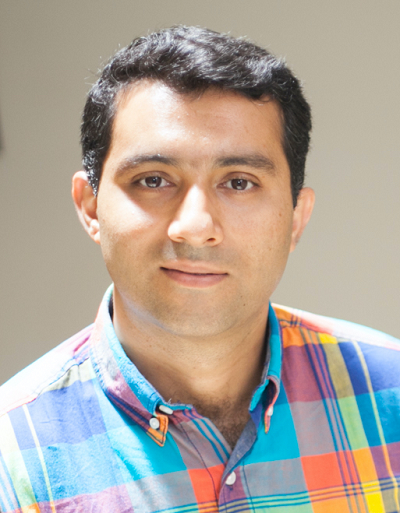 Bio: Omeed Momeni (S’04-M’12-SM’18) received the B.Sc. degree from Isfahan University of Technology, Isfahan, Iran, the M.S. degree from University of Southern California, Los Angeles, CA, and the Ph.D. degree from Cornell University, Ithaca, NY, all in Electrical Engineering, in 2002, 2006, and 2011, respectively.
Bio: Omeed Momeni (S’04-M’12-SM’18) received the B.Sc. degree from Isfahan University of Technology, Isfahan, Iran, the M.S. degree from University of Southern California, Los Angeles, CA, and the Ph.D. degree from Cornell University, Ithaca, NY, all in Electrical Engineering, in 2002, 2006, and 2011, respectively.
He joined the faculty of Electrical and Computer Engineering Department at University of California, Davis in 2011 and is currently an Associate Professor. He was a visiting professor in Electrical Engineering and Computer Science Department at University of California, Irvine from 2011 to 2012. From 2004 to 2006, he was with the National Aeronautics and Space Administration (NASA), Jet Propulsion Laboratory (JPL) as a RFIC designer. His research interests include mm-wave and terahertz integrated circuits and systems.
Prof. Momeni serves as an Associate Editor of Transactions on Microwave Theory and Techniques (TMTT) and a Technical Program Committee member of International Microwave Symposium (IMS) and Radio Frequency Integrated Circuits (RFIC) Symposium. He has also served as an organizing committee member of IEEE International Workshop on Design Automation for Analog and Mixed-Signal Circuits, and the chair of the IEEE Ithaca GOLD section. Prof. Momeni is the recipient of National Science Foundation CAREER award in 2015, the Professor of the Year 2014 by IEEE at UC Davis, the Best Ph.D. Thesis Award from the Cornell ECE Department in 2011, the Outstanding Graduate Award from Association of Professors and Scholars of Iranian Heritage (APSIH) in 2011, the Best Student Paper Award at the IEEE Workshop on Microwave Passive Circuits and Filters in 2010, the Cornell University Jacob’s fellowship in 2007 and the NASA-JPL fellowship in 2003.
Talk Title: Wide Band and Wide Steering Angle Terahertz Phased Array Transmitters in Silicon
Abstract: In recent years many new mm-wave applications and standards have been emerging. These systems are mostly a response to the ever-growing demand for higher data speed, higher image resolution, and better sensing systems. The same trajectory to THz and higher frequencies will likely to continue in future for higher performance and more compact systems. Realization of integrated mm-wave/THz systems in low-cost and reliable silicon technologies can be a technological milestone, paving the way for tremendous opportunities both in high-tech market and academic research. This work is focused on tackling the major challenges of implementing mm-wave/THz integrated sources, including power, bandwidth, radiation and beam steering of the source power. We have demonstrated a new phase shifting method based on combining standing and traveling waves and were able to achieve a record bandwidth and beam steering range. Among other research works, we present a 0.34-THz wideband (~50 GHz tuning range) and wide-angle 2D beam steering phased array, in 0.13μm SiGe BiCMOS.
Dr. Gerhard Schoenthal
Bio: Gerhard received his BS in Physics from the US Naval Academy in 1992 and his Ph Ph.D.D. in Physics from the University of Virginia in 2003. After graduating from the Naval Academy, Gerhard served on active duty in the US Navy for 5 years. After graduate school, he worked as a Senior Process Engineer at Intel PTD in 2003 and 2004. For the past 15 years, he has served in many roles at Virginia Diodes, Inc. the world’s leading mmWave and THz test and measurement and components company where he is currently the Chief Operations Officer.
Talk Title: US and ITU Policies for Use of Spectrum Above 100 GHz
Abstract: This presentation will review US and international regulations for use of spectrum above 100 GHz. This spectrum is different than lower spectrum in several key ways: 1) it has frequency dependent atmospheric absorption that in many cases has a major impact on propagation, 2) the small wavelengths enables antenna designs not possible at lower bands, 3) there is potentially large blocks of contiguous spectrum with bandwidths that dwarf bandwidths in lower spectrum and 4) there are many more protected passive bands than in lower spectrum where passive uses such as environmental satellites much be protected. The presentation will review recent FCC policy decisions about use of this spectrum as well as decisions made at the ITU 2019 World Radio Conference.
Dr. Xiaoxia Zhang
Bio: Dr. Xiaoxia Zhang got her Ph.D in electrical engineering from the Ohio State University in 2002, majoring in wireless communications and signal processing. She joined Qualcomm after graduation and has worked on 3G, 4G and 5G, including PHY/MAC system design, evaluation, prototyping and standardization. Dr Zhang is currently leading the system effort focusing on industrial IOT and shared/unlicensed spectrum on 5G technology.
Talk Title: Engaging 60GHz and beyond in 5G
Abstract: 5G technologies have been opening up mmWave frequencies with definitized spectrum allocations ranging up to 52.6GHz. The mmWave and adjacent frequencies are being used to support more diverse and demanding use cases and deployments. In recent 5G work, efforts have been dedicated to exploit the 60GHz mmWave band and beyond (from 52.6GHz to 114.25GHz). In this talk, we provide an overview of the latest regulations, prospective standards, and 3GPP updates for the 60GHz mmWave band and beyond. followed by system evaluation to demonstrate the system capacity for both enhanced Mobile Broadband (eMBB) and the Industrial Internet of Things (IIOT). The talk concludes with a discussion on the future outlook for spectrum beyond 114.25GHz.



